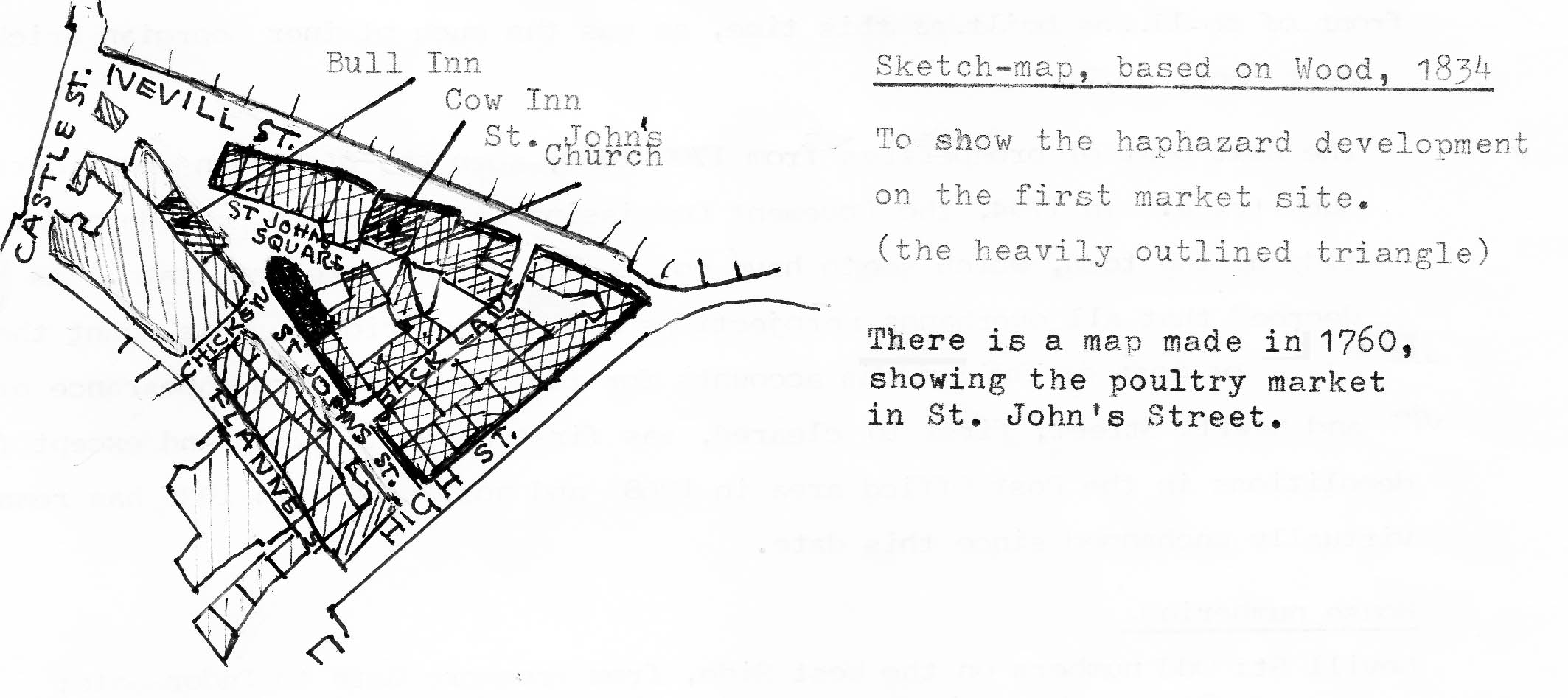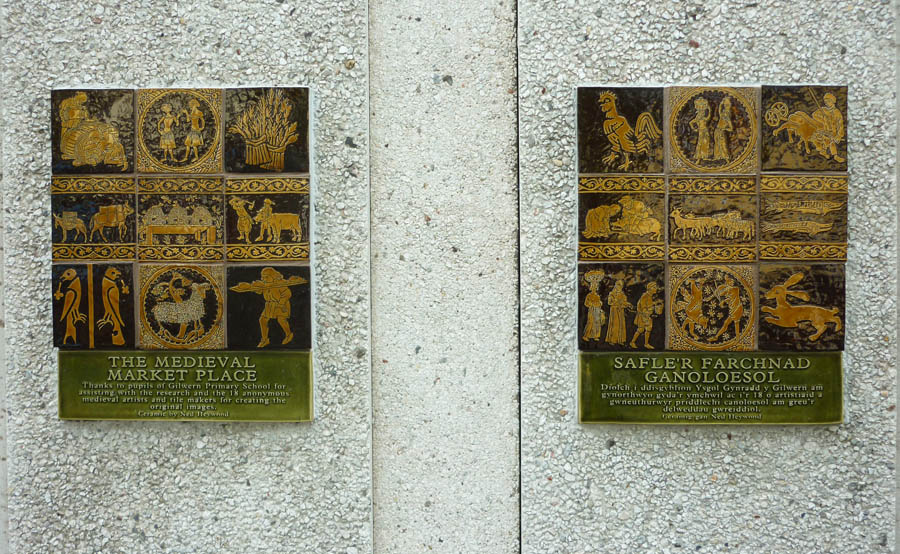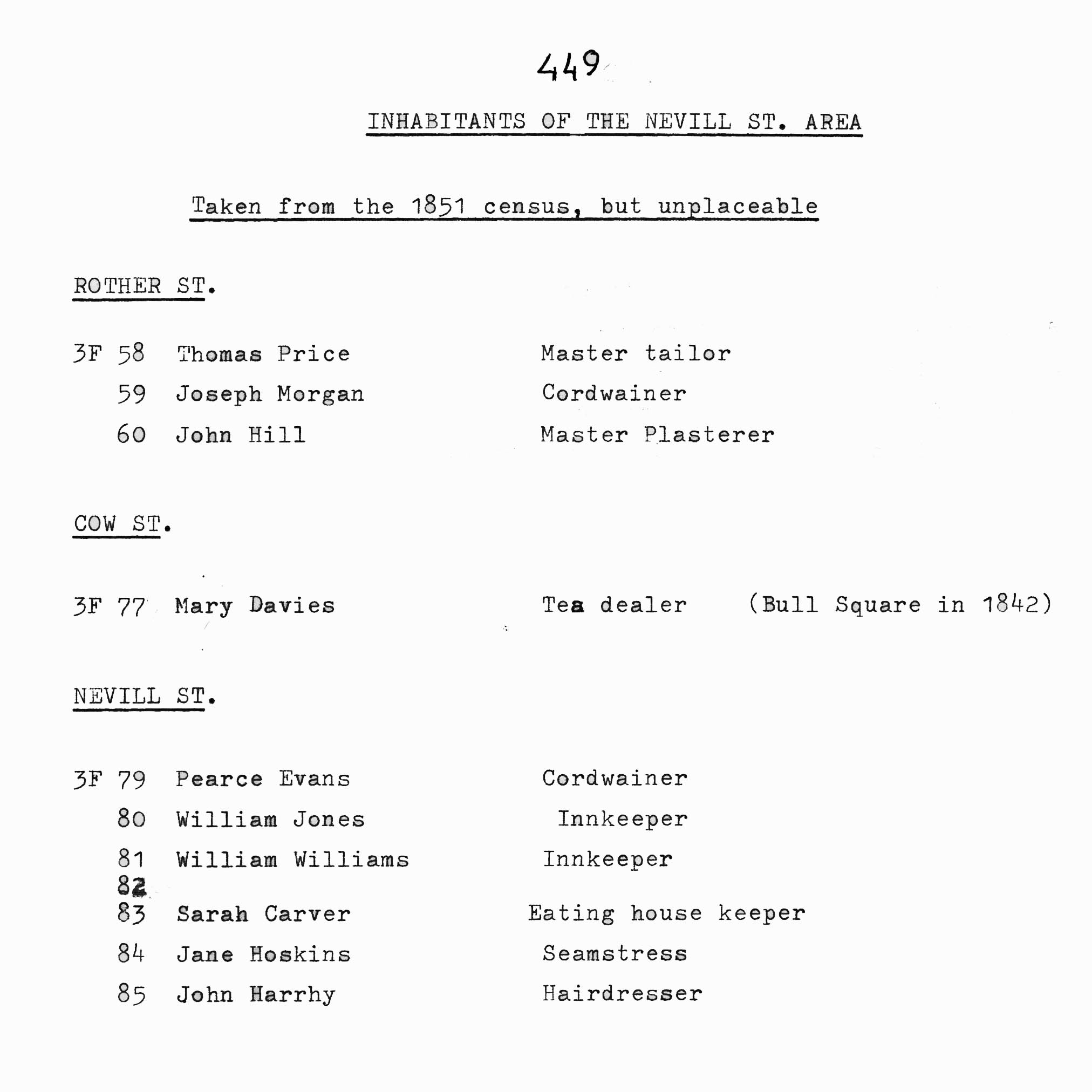Introduction to Nevill Street
Nevill Street background and the area around St John’s Church
This information is based on the original Abergavenny Local History Society Survey 1980.
Nevill Street began when the medieval town wall was built after the first murage grant in 1241 and the land inside was divided into burgage plots fronting onto the main streets of the town, i.e. Castle Street, Nevill Street and Cross Street – High Street. There is a map made in 1760 showing the poultry market in St John’s Street.

Sketch map of the market area showing the haphazard development of the first market site
There is evidence that the triangular area enclosed by Nevill Street (Rother Street until the mid 19th century), High Street and St John’s Lane (Chicken Street on the 1834 map) was the original market of the town. It includes St John’s Church which was probably there before the wall was built, the Bull, Cow and Vine Tree Inns. Butcher’s Row (now Flannel Street) may also have been part of this complex as areas of cobbling were found by the Vine Tree and in the Flannel Street excavation area (source Monmouthshire Antiquary Vol lll pt 2 1972-3 & Discovering Abergavenny by Frank Olding). The haphazard development of the whole of this area is typical of later encroachment into a market area.
The ceramic plaques on the Post Office building marking the site of the medieval market.

Both for safety when Welsh raids were expected, and for marketing, the livestock would be driven in through the Tudor (West) Gate and the Frogmore (North) Gate and their natural standing place would be the street that runs between them, formerly know as Cow Street or Rother Street (rother meaning horned cattle). This is now called Nevill Street after the family of the Earls of Abergavenny, a 19th century enhancement. Cattle were sold here until 1795 when they were moved first to the wide part of Frogmore Street. The cattle market did not come into full use until 1862 (Minutes of the Improvement Commissioners).
The North-west side of Nevill Street is the only place where the long narrow burgage plots have remained undisturbed. The settlers would have first built small wood and turf huts on the plots expected to last for one generation only, but by Elizabethan times some of inhabitants were building good half-timbered houses and the remains of these can be seen in nos 21,19 and in 14 which was the town house of the Vaughan family. Rother House has Tudor foundations.
Abergavenny had a brief spell of prosperity during the middle of the 18th century when the brightness of the wigs made here was much admired. A by-product was milk from the goats which provided the hair. The goats milk was regarded as good for consumption (Tuberculosis) starting a tourist trade here. The beautiful Adam style front of no 11 was built at this time, as was the plainer brick building next door, no 7.
The next bout of prosperity was from 1790-1820, when the Blaenavon Iron Works brought much trade. In 1794, the Improvement Commission was set up to provide a new market and tidy up the town, which seems to have got into a rather derelict state. As they decreed that overhangs and projections must be removed, alterations of many buildings accounts for the rather uniform appearance of Nevill Street (the first to be altered). It was also the first to be paved in 1795 and remained almost unchanged until the demolition and building of the new Post Office in 1968. The remains of the cellars of buildings in the square in front of the Post Office has been revealed whenever alterations to this area are made, showing that the houses continued to Castle Street.
House numbering: Odd numbers on the West Side, from Frogmore Street to Tudor Gate. Even numbers opposite. St John’s Street has only no 1-4 remaining on the south side.

